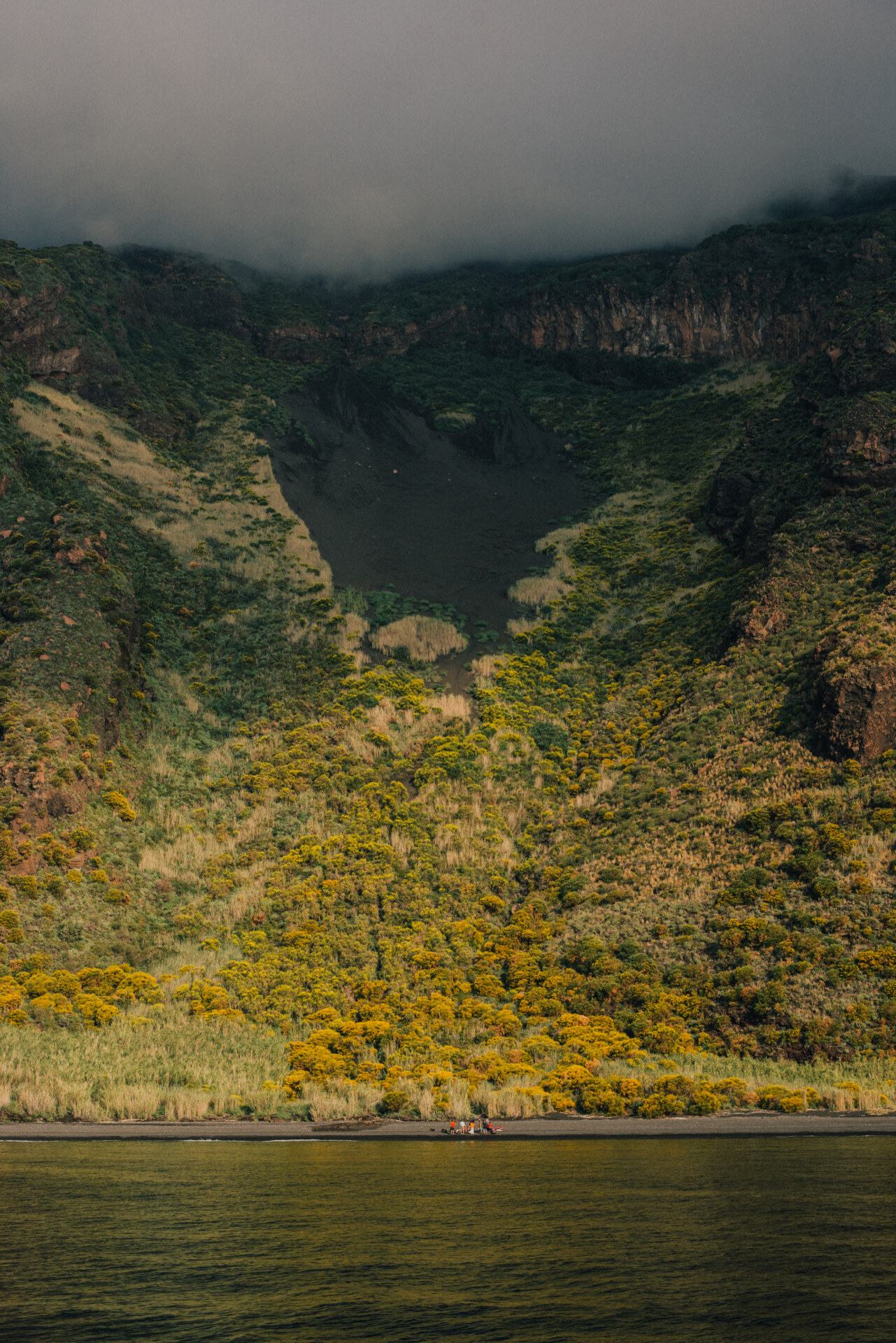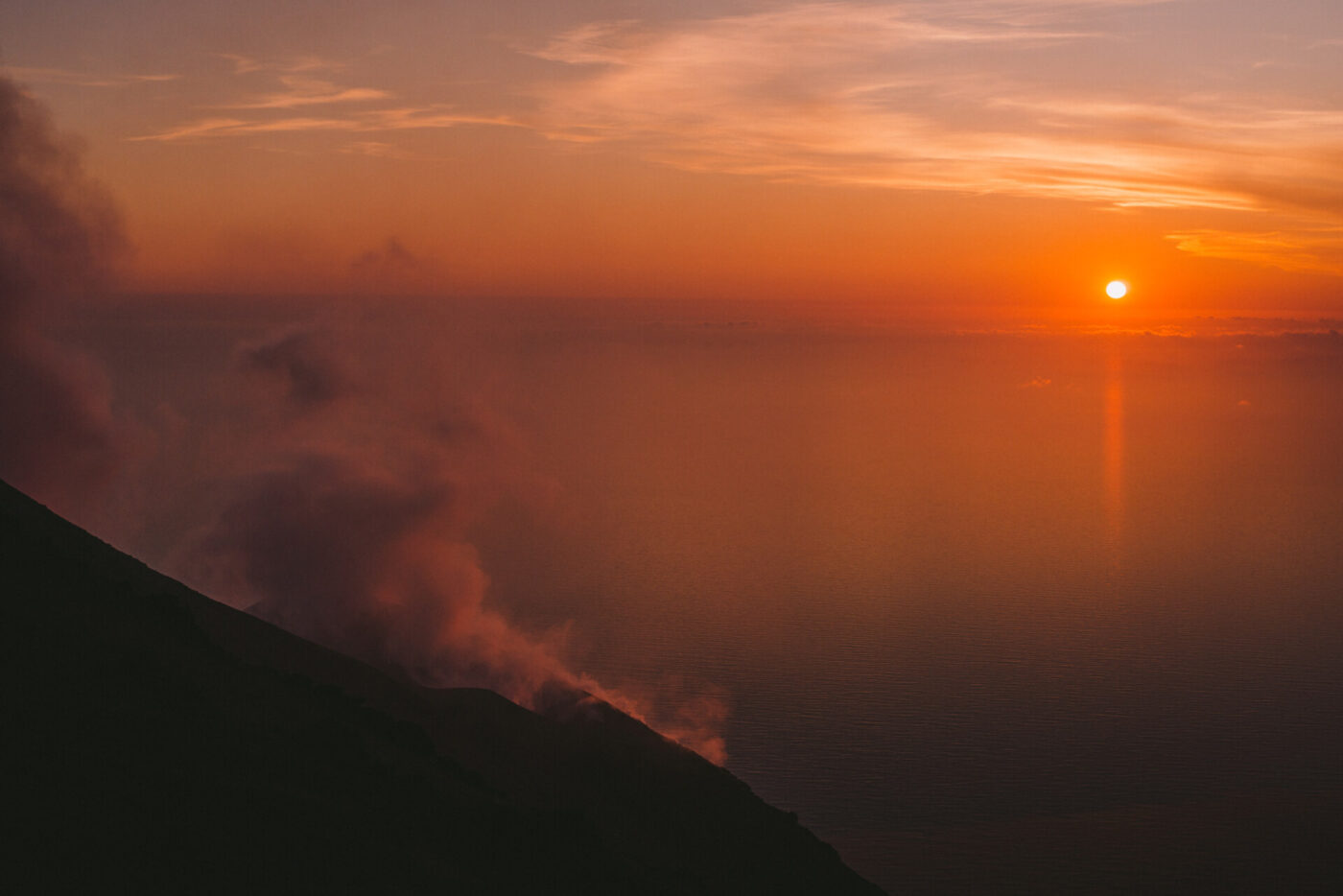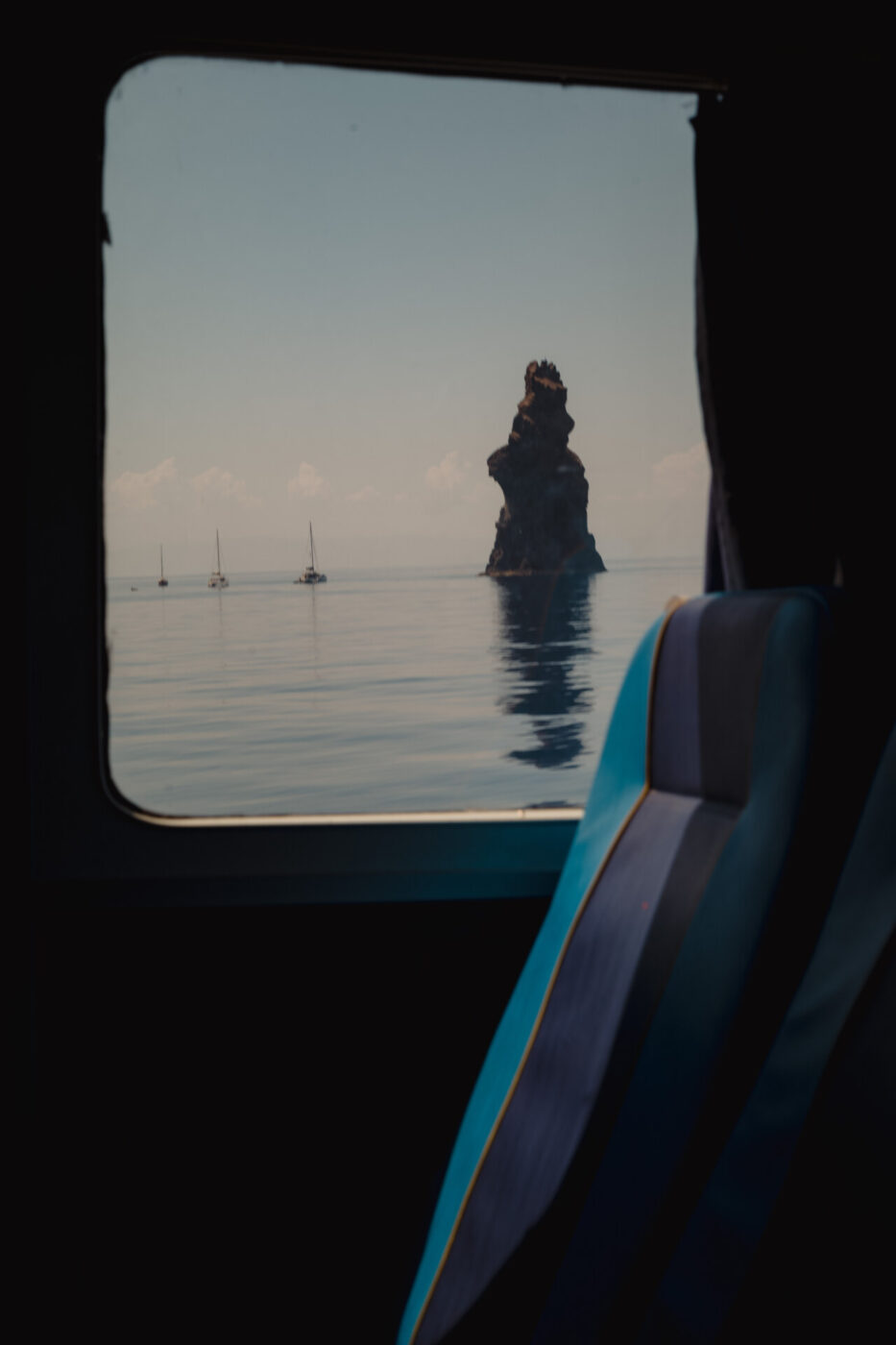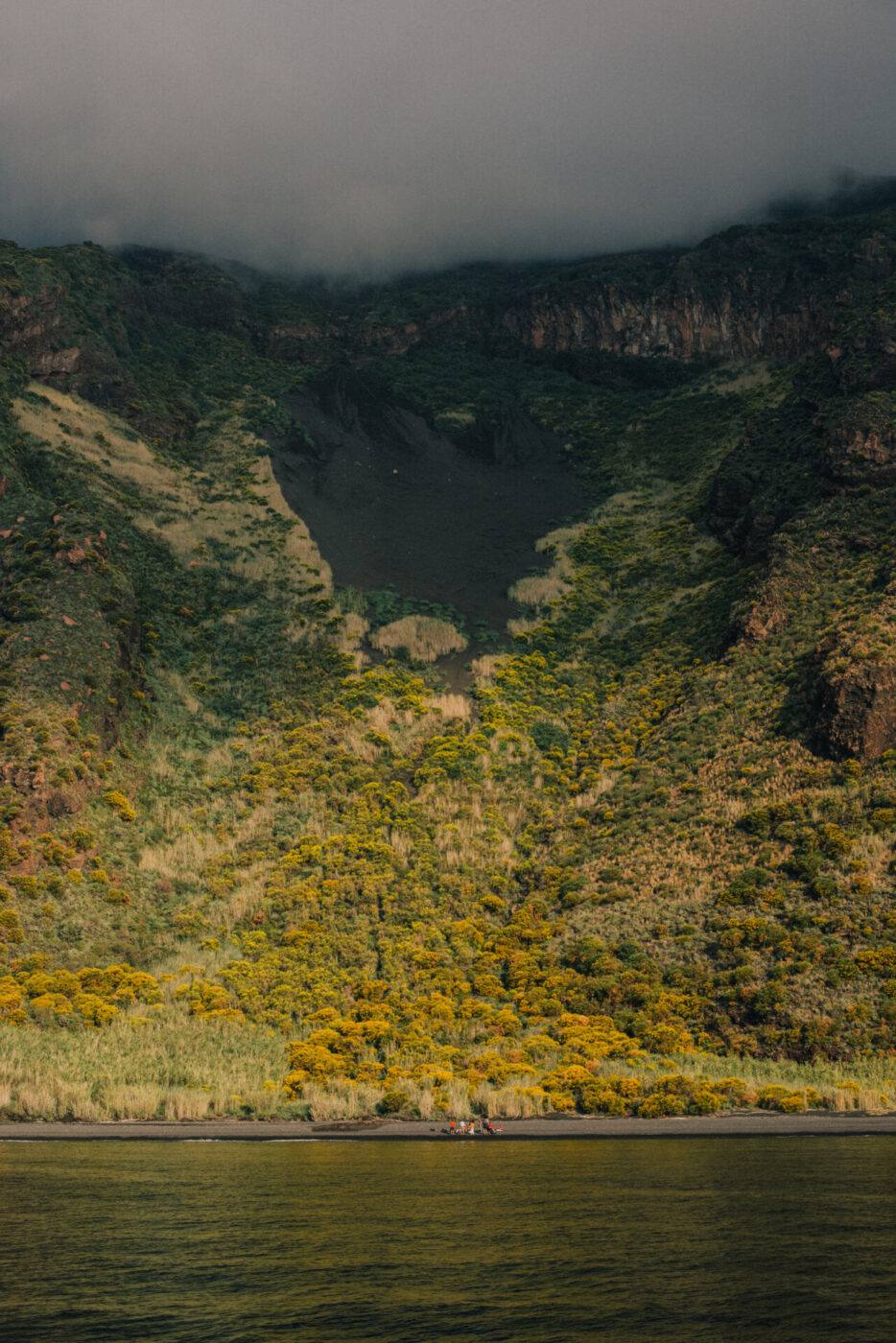The alta velocità train from Rome to Naples is late, but I’m strangely not too anxious. There is every reason for being so–in the confusion of Naples in summer, I risk losing the hydrofoil to Stromboli. Absent-mindedly, I turn my attention to the train’s dusty window, staring at my own reflection while it gets distorted by the landscape, quickly flowing towards the city.
I arrive in Stromboli after more than four hours of sail time. The island’s harbor consists of a simple concrete pier, which looks even more modest the closer my boat gets. At the end of the pier, a grumpy lady is waiting to hand me the keys to the house I’ve rented for a few days.
I wonder if coming here alone was the right decision. I could have chosen an easier destination for the first time I go on holiday by myself, but the remote Mediterranean island with the active volcano won.
I struggle to follow what the grumpy landlady is saying as she explains how to get to the house.
Behind her, the ground rises up quickly to form the mass of the volcano, covered in scrub and mottled vegetation. Raising my head, I try to catch a glimpse of the top, but it’s hidden by some gray clouds. A trail of smoke slowly disperses across them, blending with the chatter of tourists and the noise of mopeds all around us. To get rid of her as quickly as possible, I pretend to understand the directions, which turn out to be more complicated than expected.
Once I’ve reached the group of houses that supposedly includes mine, I take the wrong turn twice before getting to a small wooden gate that opens more so because of the slight push I give the door than because of the key itself. The house is traditional, painted in white with a flat roof, and it’s much larger than I expected. The wall that borders the property is covered in a huge bougainvillea that has scattered its dried pink flowers on the ground. The few tufts of grass that sprout around are also drying.
A staircase with unusually high steps leads to a terrace separated from the rest of the roof by a low wall. I take off my shoes and step over. I slowly reach the center, moving cautiously, afraid the roof might collapse under my weight. The summer light reflecting on the white paint of the house is so strong that I have to put on my sunglasses.
The view from my newly conquered outpost is dominated by the volcano, which is now throwing thick smoke. I look at the palm trees moving indolently in the sea breeze, at the maritime pines, and at the fig trees that dot the slopes of the mountain with gray and green before the soil becomes barren towards the top.
Almost stunned by the heat, I begin to fantasize about the inhabitants of the other houses I can see, all equally painted white and with the same cubic shape, emerging between one shrub and another like shells in the sand.
It’s funny how there never seems to be anyone around.

It was here that, over 70 years ago, Roberto Rossellini fell in love with Ingrid Bergman while the two were working on his film Stromboli, Land of God (1950). Both of them were married at the time, and their love became a huge scandal. I wonder if the volcano played a role in their love story. The locals, which refer to it as iddu (“it”), attribute all sorts of strange powers to it.
“Get ready, because you’ll never be able to sleep on the island!” warned a friend who had already been here. “It’s because of the magnetism… you know, all that iron in the rocks below…”
A thundering roar, accompanied by a strangled rumble, pulls me from my daydreams. New smoke is pouring out of the volcano.
I quickly wash my face and leave the house to enjoy Stromboli’s deserted streets before getting ready for the Volcanic trek I booked for the afternoon.
Walking towards the sea, I find some concrete steps leading to a rock where I leave my sliders and the towel I’ve brought. I look around: nobody in sight. I take off my swimming trunks and I get into the water, naked.
You can’t see the bottom of the sea in Stromboli, it’s just too dark.
Immersed in the black water, I remember that verse by Paul Valéry, which alone would be enough to make a poem: La mer, la mer, toujours recommencée! (The sea, the sea, always starting again.)
I dry off–savoring the last moments of cool water–and gather myself for the trek. Since several reckless tourists got lost taking unmarked paths, every visit to the volcano has to be accompanied by a guide. In summer, hikes start in the afternoon and are scheduled so that one reaches the top at sunset.
Our guide hands out a red helmet to each of us 30, and we begin the trek, single file.
The path is clean but it quickly narrows to the point where I have to put one foot right in front of the other. There’s a clear sense of excitement in the group: some make funny comments and jokes, some laugh coarsely, but, when fatigue takes over, almost everyone keeps silent.
The sun is still high when the guide gives us a break, informing us we’re almost halfway. Looking down, I can see the endless line of people who, like us, are climbing the volcano. At intervals that seem more and more regular, we hear deep rumbles from inside.
We reach the top half an hour before sunset. Unlike earlier, it’s quite cold up here.
The pressing roar that has accompanied us throughout the climb is now articulated in an unspecified series of hisses, puffs, and strangled whistles.
I pass by a lady in her seventies from another group. She’s motionless as if paralyzed with fear. One of the guides is trying to reassure her, repeating that everything is fine and that we are all safe, but she doesn’t seem to be listening and keeps shaking her head.
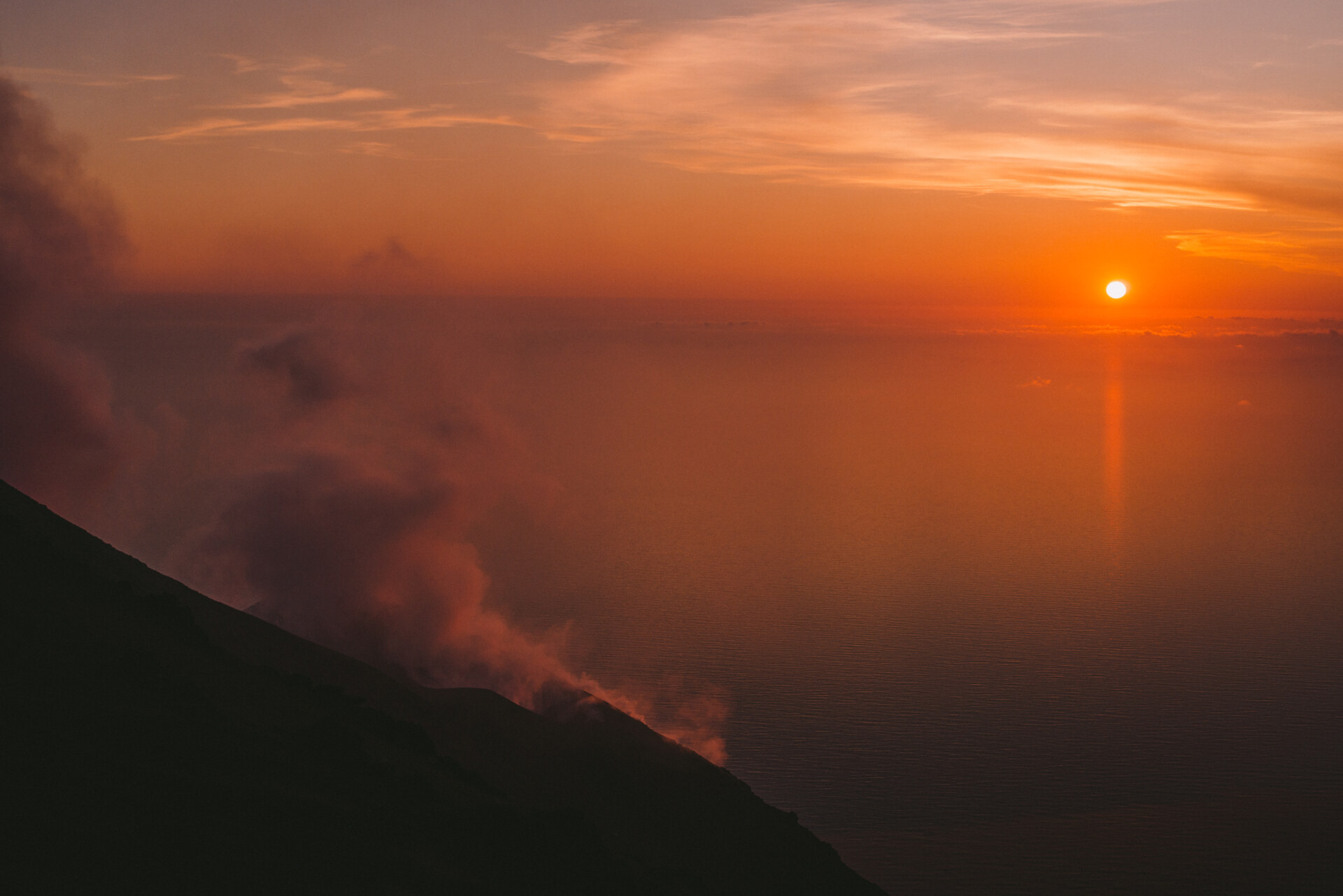
Stromboli the island where Rossellini shot "Stromboli - Terra di Dio"
A few more steps and I get to the edge of a cliff. The main cavity of Stromboli extends in front of me: the lunar landscape that I have anticipated so many times in my imagination stands out against the violet sky at dusk, suffocated by smoke. Here and there, stretches of soft, velvety-looking sand give up ground to sharp-edged rocks.
Five columns of smoke rise up from as many craters, dug into the dip. A reddish flicker heralds the deafening sound of a lava discharge that grows higher and higher, yellow in the center. Lapillus fall down all around us. When the eruption dies out, the nearby rocks are all covered in red dots.
The eruptions continue. Two, three at a time. They alternate, they end, they resume. Eternally renewed, like the sea in Valéry’s poem.
Climbing down the volcano takes us some hours, so, when I get back to my house, it’s past midnight. Exhausted but still electrified by the experience, I sit on the roof and I look up at the sky. It’s particularly clear tonight, no moon. I don’t remember seeing the sky at night like this, ever. I almost feel ashamed about it. The halo of the Milky Way reaches as far as I can see. Among the myriad of nameless stars, I am too tired to try to recognise any constellations.
Will I be able to fall asleep?
“It’s because of the magnetism… you know, all that iron in the rocks below you…”
My eyelids get heavier and heavier. Without noticing it, I abandon myself to a deep slumber.

